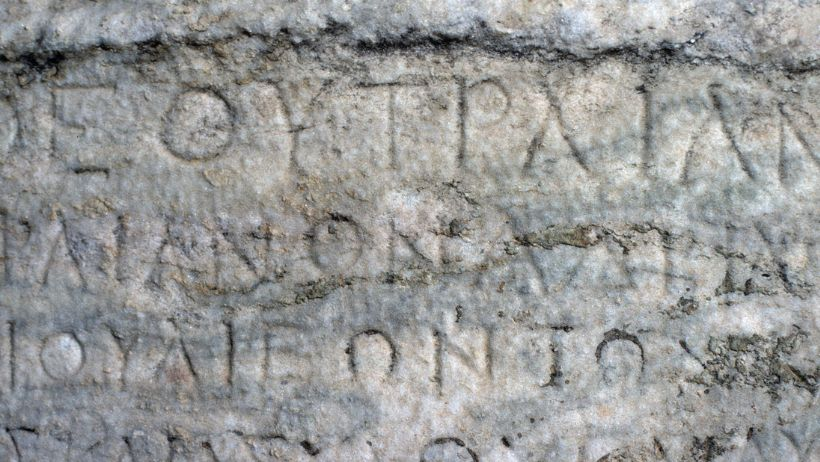When we think of women in mathematics from ancient times, the name Hypatia often comes to mind. However, mathematician Evangelos Spantagos has identified 40 women mathematicians who lived in Ancient Greece, yet remain largely unknown today.
One such figure is Aethra, best known as the mother of Theseus, who was also a teacher of arithmetic. Similarly, Theano, the companion of the famed mathematician Pythagoras, is credited with contributions to the theory of the golden ratio. These women are just two examples of the many female mathematicians from Ancient Greece whose contributions have been overlooked for over 31 centuries. Their rediscovery and recognition within the scientific community is largely due to research conducted by mathematician and author Evangelos Spantagos, as reported in Ta Nea (October 30, 2007).
Rediscovering Forgotten Scholars
Spantagos began his research after a student asked if there were any female mathematicians from Ancient Greece apart from Hypatia mentioned in geometry textbooks. Over four years, alongside his daughter Roula, also a mathematician, he identified 40 such women from various regions of ancient Greece. Many of them had advanced education, and those associated with the Pythagorean School faced fewer barriers since Pythagoras admitted women into his academy. Interestingly, some, like Lasthenia of Arcadia, may have attended Plato’s Academy disguised as men due to societal restrictions. Surprisingly, very few of these women were married or had children.
A promising avenue for further research is the exploration of Arabic manuscripts, which preserved many ancient Greek works lost with the destruction of the Library of Alexandria.
13 Notable Women Mathematicians of Ancient Greece
Pythagorean Women
Hypatia (4th–5th century CE)
The most famous female mathematician of antiquity and the first recorded female scientist. She made significant contributions to mathematics, astronomy, and mechanics but met a tragic fate at the hands of religious fanatics.
Themistoclea (6th century BCE)
Also known as Aristoclea or Theoclea, she was a Delphic priestess who influenced Pythagoras’s ethical principles and introduced him to numerology and geometry. The philosopher Aristoxenus (4th century BCE) claimed she taught mathematics to visitors at Delphi. Legend holds that she adorned Apollo’s altar with geometric figures, impressing Pythagoras, who later welcomed women into his school.
Theano of Croton (6th century BCE)
A devoted follower of Pythagoras, Theano is believed to have contributed to the theory of the golden ratio. She played a crucial role in Pythagorean number theory and, after Pythagoras’s death, led the scattered Pythagorean community. Along with her daughters, she helped spread Pythagorean teachings across Greece and Egypt.
Aethra (10th–9th century BCE)
Daughter of Pittheus, ruler of Troezen, and mother of Theseus, Aethra was also a teacher of arithmetic. She based her teachings on the complex Cretan-Mycenaean numbering system, which lacked the concept of zero and required frequent repetition of symbols.
Phintis (6th century BCE)
A student of the Pythagoreans from Croton, Phintis taught at the Pythagorean School. The Roman writer Boethius cited her as an inspiration for the concept of numerical equality in Pythagorean triplets.
Polygnota (7th–6th century BCE)
A mathematician cited by the historian Lobon of Argos as a student and companion of Thales. She simplified numeric symbols through the acrophonic system, where letters represented numbers (e.g., Δ for ‘ten’ and Χ for ‘thousand’). According to Vitruvius, she was the first to formulate and prove the theorem stating that an angle inscribed in a semicircle is a right angle.
Melissa (6th century BCE)
A student of Pythagoras, Melissa studied regular polygons. Lobon of Argos mentions her work The Circle and the Nature of Inscribed Polygons.
Timycha (6th century BCE)
A Spartan-born Pythagorean who wrote about ‘amicable numbers,’ as recorded by Iamblichus. After the Pythagorean school was destroyed, she fled to Syracuse, where the tyrant Dionysius tried to extract Pythagorean secrets from her. She reportedly bit off her tongue rather than reveal anything.
Ptolemais (6th century BCE)
A Neo-Pythagorean philosopher, musician, and mathematician mentioned by Porphyry in Harmonics of Ptolemy.
Diotima of Mantinea (6th–5th century BCE)
A Pythagorean teacher mentioned in Plato’s Symposium. Xenophon noted her expertise in Pythagorean numerology and geometry.
Vitalis (6th–5th century BCE)
Also known as Vitala or Bistala, she was the granddaughter of Pythagoras and specialized in Pythagorean mathematics. Her father entrusted her with preserving his philosophical writings before her death.
Perictione (5th century BCE)
A Pythagorean philosopher and mathematician, some sources identify her as Plato’s mother. She is said to have played a key role in his early exposure to mathematics and philosophy. Stobaeus noted her expertise in geometry, arithmetic, and their relation to the divine.
Lasthenia of Arcadia (4th century BCE)
A mathematician and philosopher who studied at Plato’s Academy. After Plato’s death, she continued her studies with his nephew Speusippus and later became his partner.
The Legacy of Pythagorean Women
Iamblichus’s On the Pythagorean Life (6th–5th century BCE) preserved the names of 17 women who excelled in Pythagorean philosophy and mathematics. Among them were:
Ryndaktor
Okkelo and Ekkelo (sisters from Lucania)
Chilonis (daughter of Chilon the Lacedaemonian)
Cratesicleia (wife of Cleonarus of Lacedaemon)
Lasthenia of Arcadia
Ambrotelia (daughter of Ambrotelus of Tarentum)
Echekrateia of Phlious
Theano (wife of Metapontine Brontinus, not to be confused with Pythagoras’s wife)
Boi of Argos
Babylika of Argos
Cleachma (sister of Autocharis the Lacedaemonian)
Nisthiadousa
The remarkable contributions of these women demonstrate that female scholars played a vital role in the advancement of mathematics in the ancient world. Their rediscovery reshapes our understanding of history and serves as a reminder that knowledge and innovation were never limited by gender, even in societies that placed barriers on women’s education and recognition.









